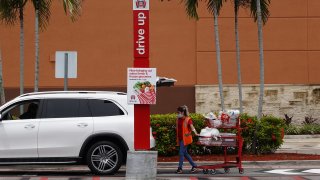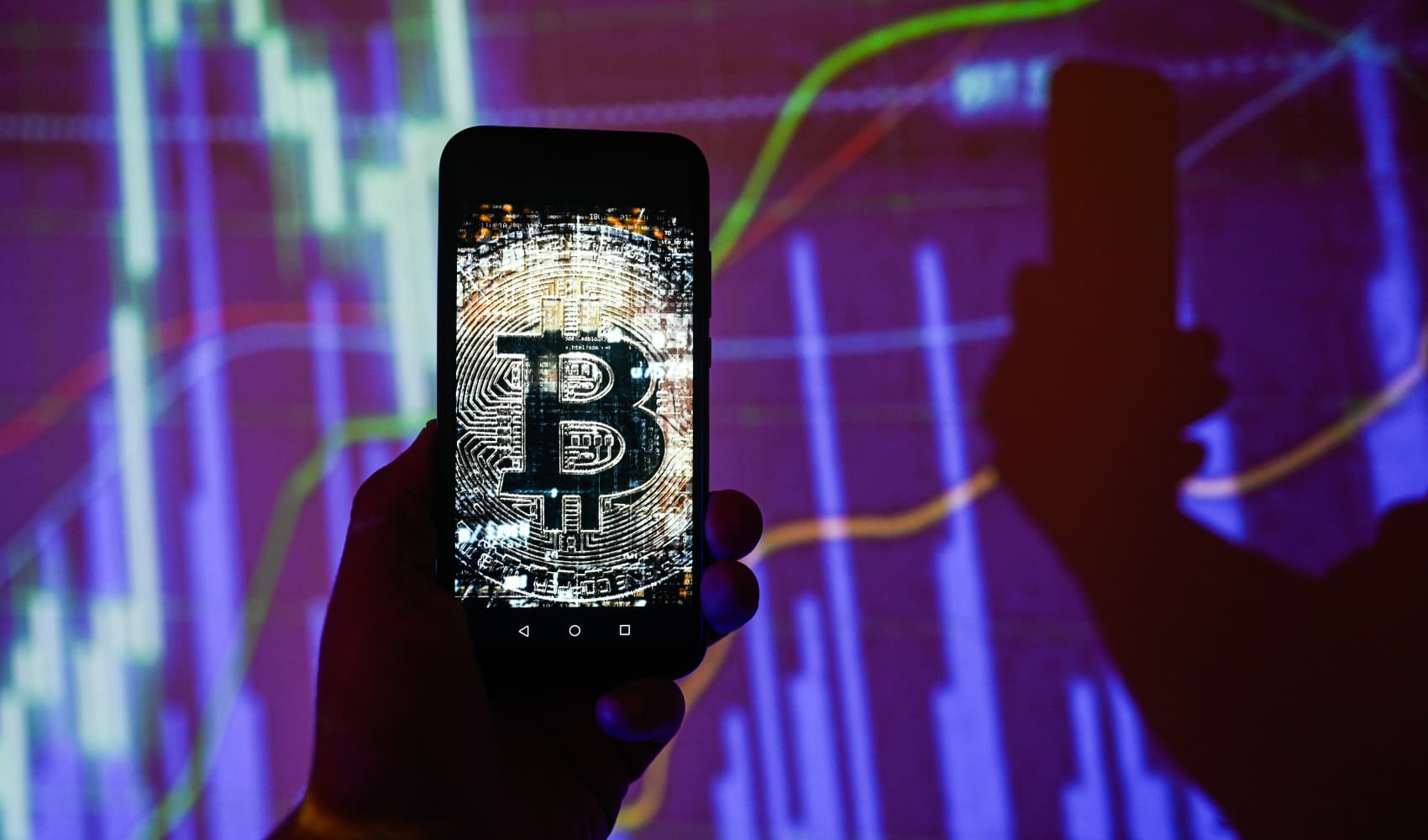
- Target has started to offer curbside returns at roughly a quarter of its stores.
- Drive Up, its curbside pickup service, has been a major driver of the company's online sales.
- The big-box retailer is sweetening the service, as it tries to hang on to pandemic-fueled gains.
Target is dangling a new perk to get shoppers to swing by its stores: customers can make returns without leaving their car.
The curbside-returns service, which began last week at roughly a quarter of Target's nearly 2,000 stores nationwide, will be available across the chain by the end of summer.
Target is sweetening its curbside-pickup service, Drive Up, to attract and retain customers as the retailer braces for a potential sales slowdown and tries to hang on to pandemic-fueled gains. Total annual revenue grew by about $31 billion – or nearly 40% – from fiscal 2019 to 2022.
Get Boston local news, weather forecasts, lifestyle and entertainment stories to your inbox. Sign up for NBC Boston’s newsletters.
Now, as shoppers become more budget conscious and buy fewer discretionary items, Target said it expects comparable sales to range from a low single-digit decline to a low single-digit increase this fiscal year. At an investor day in February, it projected full-year earnings per share of between $7.75 and $8.75, below Wall Street's expectations of $9.23 per share, according to StreetAccount estimates.
The company hopes convenient perks like curbside returns will boost customer loyalty and jolt sales.
"Any time we remove friction from our guest experience it benefits the guests and benefits Target because they deepen their relationship with us," Chief Stores Officer Mark Schindele said. "We've shown that with Drive Up overall. Guests try that service, they love it and then they shop our stores more often."
Money Report
Curbside pickup became a bigger sales driver for retailers' e-commerce businesses, especially as shoppers tried to avoid crowds during the Covid pandemic. For some shoppers, the habit has stuck as work and home schedules are fuller and commutes are back — and retailers including Target and rival Walmart now aim to capitalize on that.
Click-and-collect, a term used to describe buying online and picking up purchases curbside or in store, grew from 6% of overall e-commerce sales in the U.S. in 2019 to 11% in 2022, according to data from Euromonitor, a market research firm.
Delivery still accounts for the majority of online sales, but click-and-collect drove about $114 billion of sales in 2022 — a jump from $36 billion in 2019, according to Euromonitor.
In the U.S., the vast majority of click-and-collect comes from curbside pickups, said Bob Hoyler, industry manager for retail research at Euromonitor.
The market research firm anticipates click-and-collect sales in dollars will grow by 8% this year, compared with 2% for delivery. The growth will be fueled by consumers who opt for curbside pickup to avoid delivery fees or shipping minimums at a time of heightened price sensitivity, Hoyler said.
Target debuted Drive Up in 2017 as a test in Minneapolis, where the company is based. It expanded the service to stores across all 50 states in 2019. It added fresh and frozen groceries in 2020, and tacked on wine and beer the following year.
Last year, the retailer expanded the service to allow shoppers to order a Starbucks drink to retrieve when they pick up their curbside order. The service is available at about 240 stores.
Sales fulfilled through Drive Up grew more than 70% in the fiscal year that ended in late January 2022, on top of a more than 600% boom during the prior fiscal year, the company said. Drive Up sales grew more than 10% in the most recent fiscal year.
Target's same-day services, which include Drive Up, accounted for more than half of digital sales as of late January as consumers embrace convenience. Same-day services also include Target-owned delivery service Shipt and Order Pickup, which allows shoppers to retrieve an online purchase inside of a store.
The retailer's average fulfillment cost per unit has fallen by 40% over the past four years as those services grow, Chief Operating Officer John Mulligan said at an investor day in February. More than 95% of Target's total sales, including digital, are fulfilled in stores.
Other retailers have added to curbside pickup. Walmart rolled out curbside returns at all of its stores ahead of the 2022 holiday season. Dick's Sporting Goods added curbside returns to its services in 2020 and offers it across all of its stores.
Neither company would quantify the use of curbside pickup or returns, but Walmart said it has seen nearly double the volume of customers using curbside returns from its launch across the chain last fall compared with this month.
At an investor event earlier this month, Walmart CEO Doug McMillon said the retailer is competing on convenience, too. He credited pickup and delivery for driving growth in recent years, and said the company's recent survey results show customers are choosing the big-box retail giant to save time along with money.
Yet other retailers such as Kohl's have eliminated curbside pickup. It ended the service last summer, swapping it out for a self-pickup service inside of stores.
The company's shift to self pickup is part of efforts to cut costs, including by reducing its payroll, Chief Financial Officer Jill Timm said in September at a Goldman Sachs conference. She said Kohl's is also testing self checkout and self returns.
For some retailers, the time and labor of curbside pickup can be hard to justify — especially since it encourages shoppers to stay in their cars rather than step into stores where they may fill up their carts with more purchases, Euromonitor's Hoyler said.
Those concerns fueled skepticism of curbside returns within Target, too.
Most Target returns are made at the store, according to the company. Inside of a store, a shopper may swap out a returned product for another or grab an impulse item.
At Target's investor day in late February, Citibank analyst Paul Lejuez asked if the retailer would ultimately miss out on purchases by adding curbside returns.
Schindele, the chief stores officer, said Target is focused on the lifetime value of a customer, not just the economics of a single transaction. He said allowing curbside returns also helps the retailer get unwanted items back on the sales floor faster and lowers the cost of mail-in returns.
He added that curbside pickup still inspires browsing and other purchases. On average, about 20% of customers who pick up Drive Up orders also make an in-store purchase on the same day, he said.
"What we find is when a guest uses Drive Up — and it could be Drive Up returns, it could be Drive Up purchase — we find that they spend more money in store over the course of the year."
During tests of curbside returns, some shoppers have stopped by just to return an item, Schindele said. Others have picked up purchases while making a return. Still others have retrieved items they bought, made a return and gotten a Starbucks drink.
For Target, curbside returns could serve as a differentiator and a complement to the merchandise mix it sells, Hoyler said. Target's sales focus is on general merchandise, such as apparel and beauty products, with only roughly 20% of its annual sales coming from grocery items. That's much less than Walmart, which draws nearly 60% of its annual U.S. sales from grocery.
That general merchandise tends to be returned much more often than items like milk and bananas, he said.






